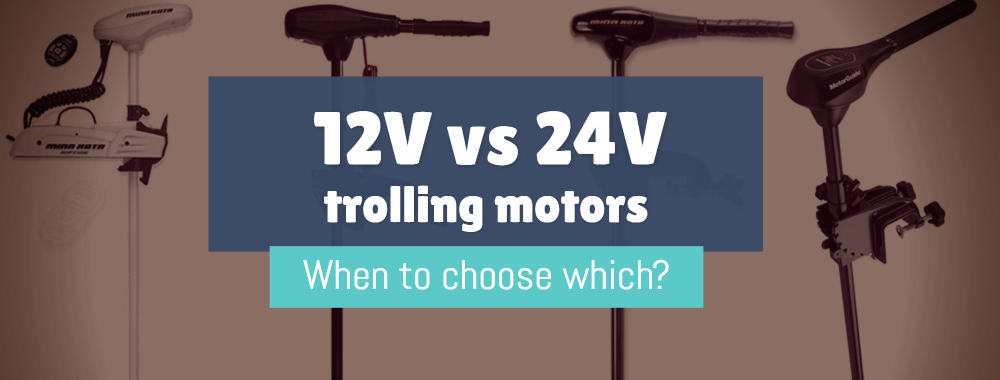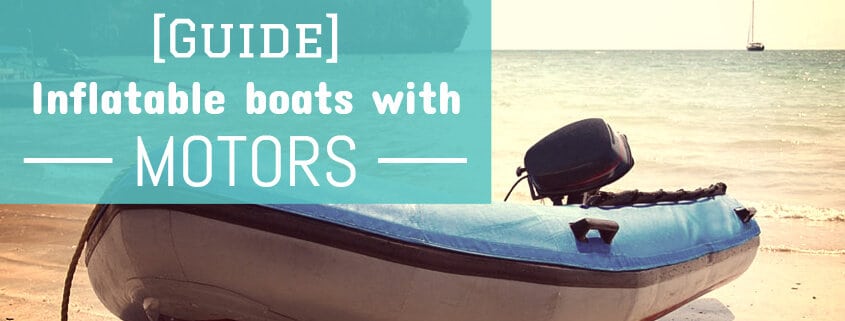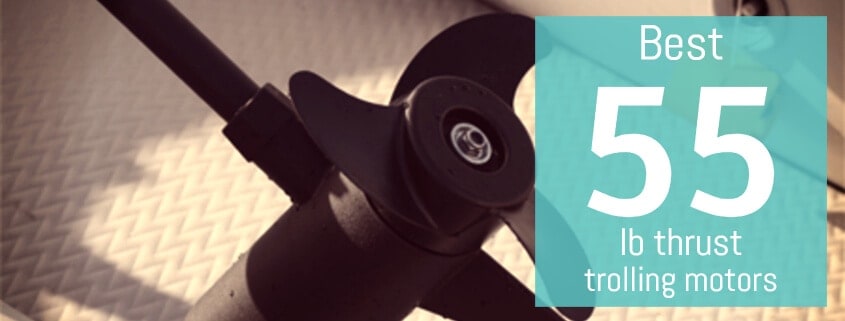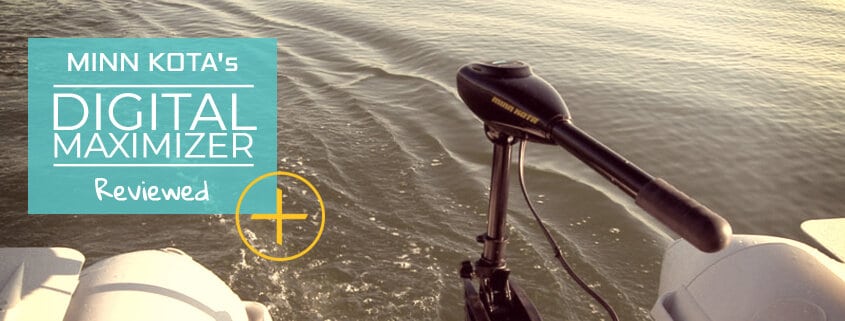It’s no secret that trolling motors have risen in popularity.
But what exactly is a 12V trolling motor? And what are the differences between it and a 24V model?
We’ll take a look at these questions and more to help you better understand why one might be right for your needs!
Contents
Comparing 12V & 24V electric trolling motors
What are the key differences between 12V and 24V trolling motors?
The main differences between 12V and 24V trolling motors come down to their thrust, power consumption, and efficiency. 12V motors have a maximum of around 60 lbs of thrust with lower operating time on a charge, while 24V motors are more powerful, more efficient, but are more expensive and require 2 batteries to run.
Let’s go through all of this in detail.
Thrust of 12V vs 24V trolling motors
Thrust is measured in pounds (lbs) and indicates how powerful the motor is. Mind you, having more thrust is not linear with having more speed!
12-volt trolling motors are less powerful than 24V motors, making them unsuitable for larger and heavier boats.
If you look at Minn Kota’s range of trolling motors, they make:
- 12V motors up to 55 lbs of thrust
- 24V motors with 68-86 lbs of thrust
Anything over 100 lbs of thrust would require a 36V system.
Battery requirements
A 12V trolling motor requires a single 12V marine battery to work.
However, a 24V motor needs two 12V batteries hooked together in series. Here is an article on how to do this, and a helpful diagram below.
DIAGRAM
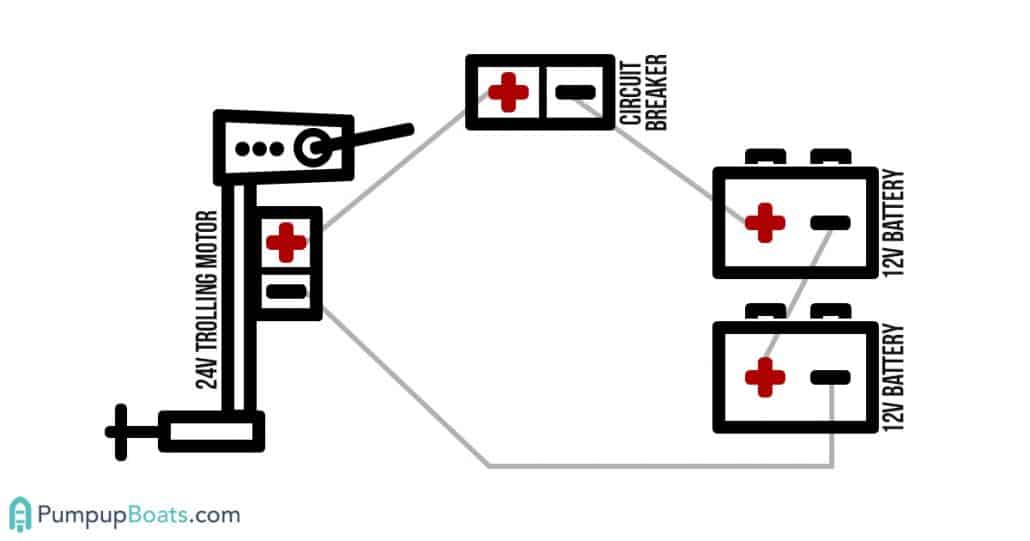
Also, you should keep in mind that the dual battery setup of a 24V system will require double charging as well.
Simplicity of use
12v trolling motors are simpler to use than 24V motors, because you only need one battery to power them.
You have fewer things to carry around and don’t need to worry about wiring the two 12V batteries together properly.
Efficiency
The two motors are designed to operate similarly, with the exception that a 12-volt motor requires twice the voltage from its 12-volt supply than a 24-volt motor for a given mechanical load.
Mechanical load power is defined as:
2πnT
n =is speed in revs per second
T = torque is newton-metres
This effectively means that if 20 amps is required from a 12V DC motor for a given power output, a 24V motor can achieve the same by using only 10 amps.
Time on the water
12v vs 24v trolling motor run time is an important consideration for fishermen.
Because 24V motors are more efficient and they use two batteries, your running time will be drastically higher than with a 12V motor.
Weight and space
The weight of 12V and 24V trolling motors is about the same. However, a 12V trolling motor system will take up less space on your boat than a 24V model.
Why?
Simply because 24V motors require 2 batteries to run.
You need to have enough space on your boat to run a 24V system.
Features
24V motors tend to have more features, because fishermen require more power and range from their setup.
You have way more options with 24V models if you are looking for advanced features such as:
- remote control (check out these remote control motors)
- GPS capabilities such as Minn Kota’s iPilot
- Spot lock,
- Etc.
Cost differences
It should not be surprising that 24V motors are more expensive to buy and operate than 12V models.
The main reason 24V trolling motors are more expensive than 12V motors is that they require more power to run.
This increased power draw means that you need two batteries instead of one to supply the necessary voltage, which drives up the cost of the overall system.
Should you get a 12V or a 24V trolling motor?
Now that you know the main differences between 12V and 24V motors, let’s talk about when you should choose which.
Boating conditions
Wind and currents have a major effect on how a trolling motor will be able to push your boat to your destination or hold it in place with spot-lock.
Cruising on smooth lakes is not a problem, but as soon as the wind picks up and the water gets choppy, you might be in trouble.
I for one, do not go out on a lake with less than 55 lbs of thrust. Weather conditions can change quicker than you think, and you don’t want to be caught off guard far from shore.
Weight of boat and gear
One of the most important factors in determining whether you need a 12V or a 24V trolling motor is the weight of your boat and your gear, as it will stipulate the amount of thrust you need our motor to generate.
The rule of thumb is that you need AT LEAST 2 lbs of thrust for every 100 lbs of weight.
If your boat is less than 2,000 lbs, a 12V motor should be OK.
However, if your boat weighs more than 2,000 lbs, you’ll need to think about getting a 24V motor to get the required thrust.
Here is a helpful table on this:
| Boat weight | Minimum trolling motor thrust | Battery required |
|---|---|---|
| 1000 lb | 20 lbs | 1 x 12v battery |
| 2000 lb | 40 lbs | 1 x 12v battery |
| 3000 lb | 60 lbs | 2 x 12v battery |
| 4000 lb | 80 lbs | 2 x 12v battery |
| 5000 lb | 100 lbs | 3 x 12v battery |
Hull design
The hull design of your boat directly affects how hard your trolling motor needs to work.
Flat hulls require less thrust from a motor than deep V hulls, especially if the boat is loaded with tons of gear.
FAQ
Are 24V trolling motors faster than 12V ones?
No, 24V trolling motors are not much faster than 12V motors. The speed of both motors is limited by the propeller diameter.
However, a 24V trolling motor will be more powerful as in having more thrust than a 12V model.
Can you run a 24V trolling motor on a 12V battery?
You can run an older 24v trolling motor on a 12V battery, but it will not be as powerful and it will not last as long.
Newer 24V motors probably will not run, as they simply won’t work under 20-22 volts. Your battery would also suff
Does a 24V trolling motor run longer than 12v?
Yes, 24V trolling motors run considerably longer than 12V models. This is because they are more efficient, and have 2 batteries powering them.
Do they make a single 24v trolling motor battery?
Yes, you can find 24V batteries on the market. However, dual 12V batteries are used more frequently for 24V motors.

